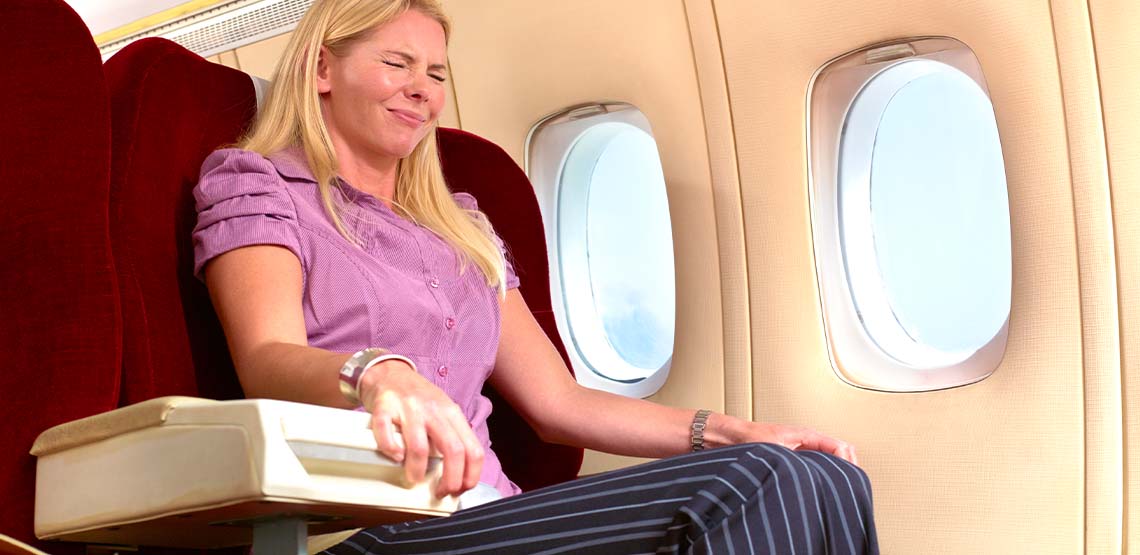Types of Phobia
Do you have an intense, irrational fear of something mundane? Maybe you have a friend who is debilitatingly afraid of spiders, lightning or bubbles. When a fear of something specific goes beyond the actual danger, this is called phobia. There are many types of phobias, and some of them are quite common. Let’s take a look.
The Most Common Phobias
There are five main categories of phobias. Let's chat about what phobias in each of these categories might look like.
1. Nature and Outdoors
These phobias can vary widely but are incredibly common. For example, fears such as heights and thunder fall into this category. These phobias can be overwhelming for those who suffer from them. Depending on the severity and the specifics of the phobia, it can be extremely limiting to everyday life.
2. Animals and Insects
The most common phobias in this category include spiders, dogs and birds. Usually, an immediate and intense feeling of panic overwhelms the individual when seeing the animal or insect in question. Physical reactions such as screaming, sweating or lunging away are common with these types of phobias.
3. Blood or Medical
Medical procedures are a common fear, and when it becomes a phobia, the patient often feels worsening anxiety and physical distress before the exam takes place. Related to medical procedures, many people suffer from a phobia of blood. The onset of physical ailments, such as nausea, dizziness or fainting are common when the individual sees blood or a gory injury.
4. Situations
Specific places or situations, such as an elevator or flying on an airplane, can trigger an uncontrollable fear in some individuals. These situational-based phobias are particularly challenging because of their prominence. As such, sufferers tend to do everything in their power to avoid the situation.
5. Events
The thought of a certain event taking place can be fear-inducing for some individuals. Events as simple as crossing the street, loud concerts or eating at a restaurant can be overwhelming and anxiety-inducing. Physical events, such as becoming ill, choking or losing your vision are also common phobias.
What Causes Phobia?
The cause of phobia, especially specific ones, can be hard to determine. Often, the cause is not singular, but a combination of internal and external factors. External factors can include a negative experience with the subject of a phobia or a learned fear from an older relative or environment. Internal factors include genetics and overall brain functionality.
There are several known risk factors that contribute to a fear becoming a phobia. Age, for example, is an important indicator. As children, we tend to have more overactive imaginations, less life experience and diminished brain maturity. As a result, children are more likely to experience an overwhelming and exaggerated sense of distress when faced with a specific fear.
If you have a family member who has a specific phobia, you are more at risk for developing the same phobia. This is especially true if the family member is an adult who is passing on the phobia to a younger generation. Another risk factor is individual temperament; if you are anxious, sensitive or have a history of exaggerated emotional outbursts, you are more likely to develop a phobia based on a perceived fear.
Prevention and Treatment
The best way to treat a phobia is to prevent it. If you or your loved one senses that a fear is becoming exaggerated or interfering with your life, it is important to seek out help. Talk therapy and psychological interventions are proven to help ease the anxiety and overwhelm that is associated with a specific fear or phobia.
Exposure therapy, which focuses on tolerance and positive reactions to the fear, is a common method used to overcome a phobia. It consists of short, controlled and anticipated exposures to the fear, which over time, with the help of a therapist, can help an individual tolerate and control their feelings of fear and anxiety at that moment. This is an incremental system, and it can help an individual build up resiliency and tolerance over time.
Facing Your Fears
One of the most important things you can do as an individual with a phobia (or as a parent of a child with a phobia) is to open up. Make sure you talk about your fears and phobias. Talking to someone you trust can often help make the situation, object or event a lot less scary. Talking about it can also help you reinforce that the exaggerated and anxiety-inducing level of fear being experienced is unnecessary.
Another important step in coping with your fears is to practice tolerating the event, object or situation as often as possible. Try not to avoid your fear, and if you are a parent of a child with a phobia, try your best to be a positive role model and demonstrate appropriate behavior. If you are able to model positive reactions to the phobia-inducing event or object, then your child is more likely to follow suit.
If your (or your child’s) fears continue to be exaggerated and disproportionate to the situation or object, then it is important that you book an appointment with your health care professional to discuss and obtain advice.

